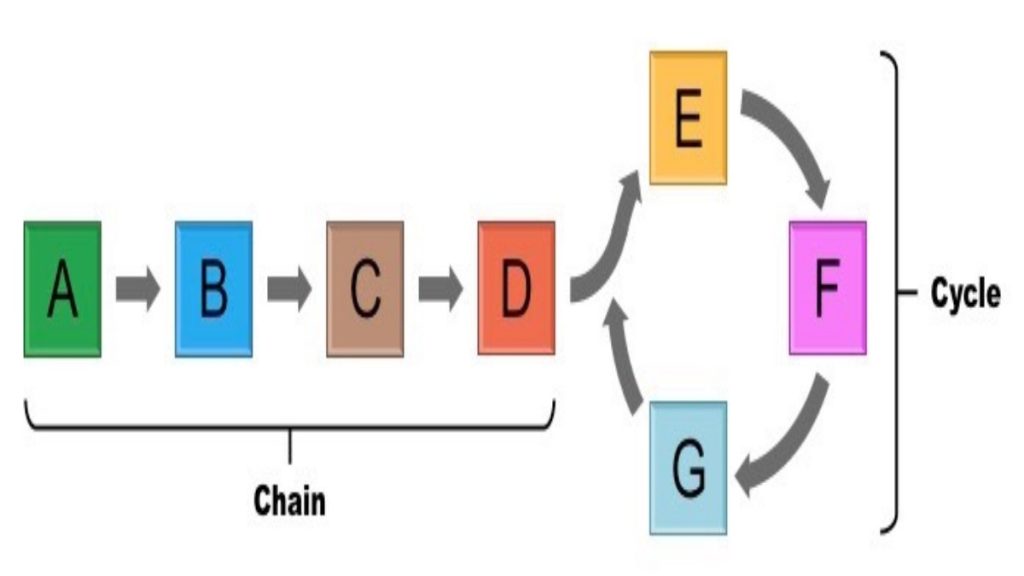The term ‘metabolism’ comes from the Greek word metabole, which means change. It refers to the total of an organism’s chemical reactions. A metabolic pathway is a series of steps found in biochemical reactions that help convert molecules or substrates, such as sugar, into different, more readily usable materials.
These reactions occur inside of a cell, where enzymes, or protein molecules, break down or build up molecules. These enzymes are similar to traffic lights in that they can slow, speed up, and stop metabolic processes.
Types of Metabolic Pathways
There are two general types of metabolic pathways: catabolic and anabolic. Catabolic pathways release energy while breaking down molecules into simpler molecules. Cellular respiration is one example of a catabolic pathway. During cellular respiration, sugar is taken in by the cell and broken down to release energy that allows us to live.
Other types of catabolic pathways include the citric or Krebs cycle, where acetate from macronutrients, like protein, fat, and carbohydrate molecules, undergo oxidation. The end result is the chemical compound carbon dioxide. Glycolysis is another type of catabolic pathway, whereby organisms and plants store and release glucose and other sugar energy to make a high-energy molecule known as adenosine triphosphate (ATP). Biologists refer to ATP as the ‘energy currency of life’ because it stockpiles the energy we need to function and perform on an everyday basis. The process of glycolysis is used to create energy via the catabolic pathway.
While enzymes in catabolic pathways break down molecules and release energy, enzymes in anabolic pathways, or biosynthetic reactions, need energy to change or convert molecules into more complex molecules or macromolecules. For example, amino acids can be used to build proteins, carbon dioxide can be used to make sugar, and nucleic acids can be used to make new strands of



Comments are closed